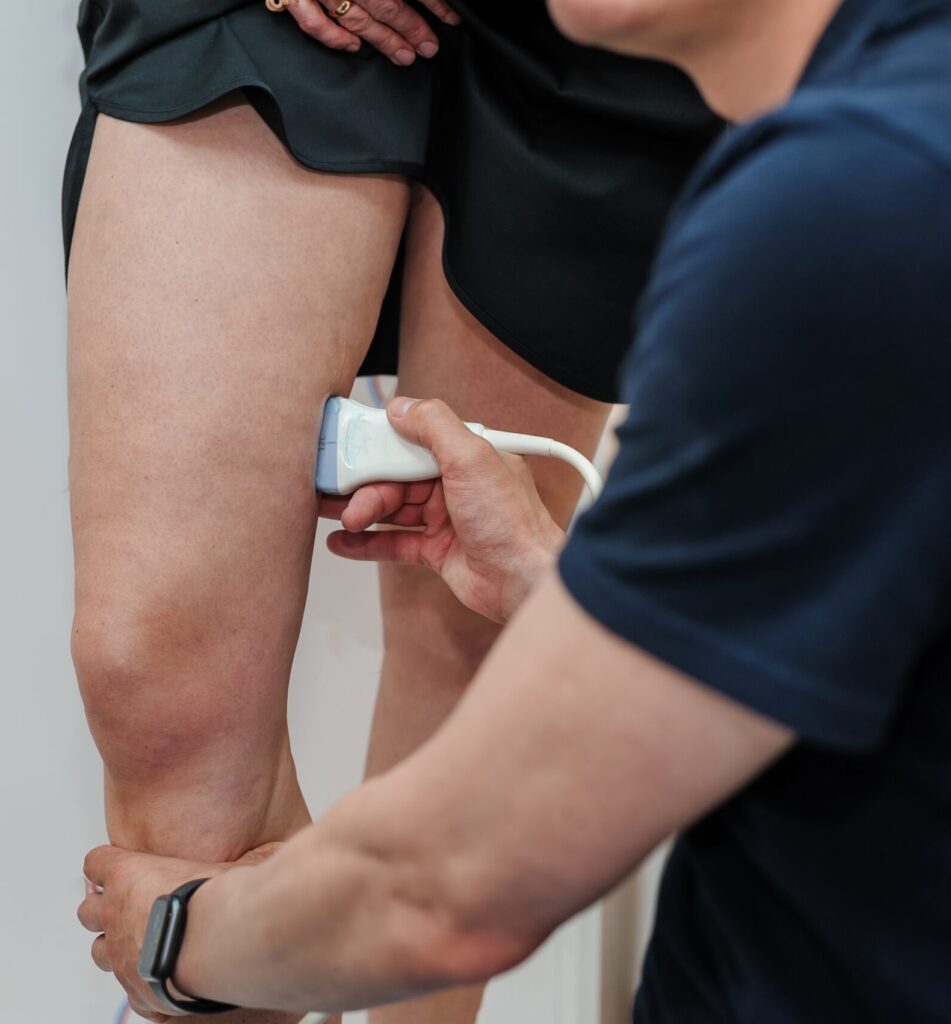
Venous ulcers
Restoring Comfort, Healing Wounds, Renewing Quality of Life
Ulcers often bring persistent pain, swelling, and discomfort, severely affecting the daily lives and mobility of those who suffer from them. Venous ulcers not only pose a physical challenge but also impact emotional well-being, as the slow healing process and frequent risk of infection lead to repeated treatments and limit quality of life. At Laurel Clinical, we understand the challenges venous ulcers bring and are dedicated to providing effective treatments tailored to each individual’s needs. Our comprehensive approach focuses on improving blood flow, enhancing wound care, and addressing the root cause of the ulcers, helping patients experience relief, faster healing, and an improved quality of life.

what are venous ulcers
Venous ulcers are a common condition that occurs when the veins in the legs are unable to efficiently circulate blood back to the heart. This leads to a build-up of pressure in the veins, which can cause the skin to break down and form an ulcer. Venous ulcers are often located on the lower leg or ankle and can be painful, itchy, and slow to heal. They can also be a sign of a more serious underlying condition such as chronic venous insufficiency. Treatment for venous ulcers typically involves addressing the underlying cause of the condition, as well as keeping the affected area clean and dressed with appropriate wound care products. Compression therapy and medical procedures such as vein ablation may also be used to improve circulation and promote healing. If you are experiencing symptoms of a venous ulcer, it is important to seek medical attention promptly to prevent complications and promote healing.
causes of venous ulcer
The main cause of venous ulcers is chronic venous insufficiency, which is a condition that occurs when the valves in the veins of the lower legs, do not function properly.
These valves normally help to pump blood from deep veins in the legs back up to the heart.
Ulcers caused by chronic venous insufficiency present damaged or weakened, blood can pool in the legs, causing the veins to stretch and swell.
This can lead to skin damage, venous disease and the formation of venous ulcers.
Chronic venous insufficiency can be caused by a number of factors, including:
Deep vein thrombosis (DVT), which can damage the valves in the veins and result in Post-Thrombotic Syndrome.
Varicose veins, which can weaken the veins and impair their ability to pump blood.
Pregnancy, which can increase pressure on the veins in the legs.
Obesity, which can put increased pressure on the veins.
Prolonged standing or sitting, which can also increase pressure on the veins.
In addition to these factors, other medical conditions such as peripheral arterial disease, heart failure, and diabetes can also increase the risk of developing venous insufficiency and venous ulcers.
core components of how we treat Venous ulcers
At Laurel Clinical, treating venous ulcers begins with addressing the underlying venous disease. Poor blood flow in the legs is often the root cause of these chronic ulcers, so our first step is to diagnose and treat the venous insufficiency or vein dysfunction that contributes to wound formation. Using advanced techniques like ultrasound imaging, we identify the affected veins and develop a treatment plan to improve blood circulation, whether through minimally invasive procedures such as sclerotherapy, endovenous laser therapy (EVLT), or other tailored interventions. By treating the venous disease itself, we help reduce the chances of recurrence and promote a healthier foundation for wound healing.
Venous disease treatment
Treating venous ulcers starts with addressing the root cause: venous disease. Poor circulation, often due to venous insufficiency, is a primary contributor to ulcer formation. Our team uses advanced diagnostic tools, like ultrasound imaging, to assess vein health and develop a personalized treatment plan. By using minimally invasive options such as sclerotherapy or endovenous laser ablation (EVLA), we work to restore healthy blood flow in the legs. This targeted approach to venous disease not only aids in healing existing ulcers but also reduces the risk of future ulcer recurrence, promoting long-term leg health.
advanced skin care & Skin Grafting
Comprehensive skin care is essential for effective venous ulcer management. At Laurel Clinical, we prioritize meticulous wound care, including cleaning, debridement, and infection prevention, to create an optimal healing environment. For ulcers that are particularly slow to close, we may recommend skin grafting to cover the wound and stimulate new tissue growth. By using skin grafts, we can accelerate the healing process, reduce discomfort, and improve the appearance and resilience of the affected skin. Our focus on specialized skin care and wound management helps patients experience faster recovery and greater comfort throughout the healing journey.
Compression Therapy
Compression therapy is a cornerstone of venous ulcer treatment at Laurel Clinical. By applying graduated compression through stockings or bandages, we help improve blood flow, reduce leg swelling, and prevent fluid buildup that contributes to ulcer formation. Compression therapy is not only beneficial for managing existing symptoms but also plays a crucial role in preventing new ulcers from developing. With compression, patients experience enhanced circulation, better support for vein function, and improved mobility, all of which contribute to a more comfortable, active lifestyle and long-term relief from venous complications.
What to Expect During Your initial consultation
Your first consultation at Laurel Clinical with Dr. Gilles Laur is a comprehensive assessment designed to understand the full scope of your venous ulcer and create a personalized treatment plan. Dr. Laur begins with a thorough medical history review, discussing any symptoms, lifestyle factors, and underlying health conditions that may contribute to vein disease. Using advanced diagnostic tools like ultrasound imaging, he assesses the circulation and health of the veins in your legs to identify the root causes of your ulcer. Based on this evaluation, Dr. Laur crafts a tailored treatment plan that may include venous disease treatment options, specialized wound care, compression therapy, or additional interventions such as skin grafting if necessary. This personalized approach ensures that each patient receives targeted, effective care to support healing, prevent future complications, and improve overall leg health.
During the consultation, Dr. Laur will go over the treatment options that best suit your condition, from lifestyle adjustments to medical treatments, explaining each approach and what you can expect during the treatment and recovery process. He welcomes any questions you may have, taking the time to ensure you feel informed, comfortable, and confident in your care plan. This compassionate, patient-centred approach at Laurel Clinical aims to provide lasting relief and help improve your overall leg health and comfort.

Transformative Leg Restoration Experience
At Laurel Clinical, we understand that every patient’s journey with venous ulcers is unique. Led by Dr. Gilles Laur, our approach to venous ulcer management is based on personalized care that targets the specific needs, health background, and goals of each individual. This careful, customized approach allows you to make informed decisions about your care, ensuring that every step aligns with your health needs and comfort
At Laurel Clinical, we are committed to providing a healing experience that goes beyond treatment alone. Dr. Laur and his supportive team are with you at each stage, from your initial consultation to ongoing follow-up care, guiding you through the process with expertise and compassion. Our goal is to help you find relief, restore comfort, and regain confidence in your daily life.


